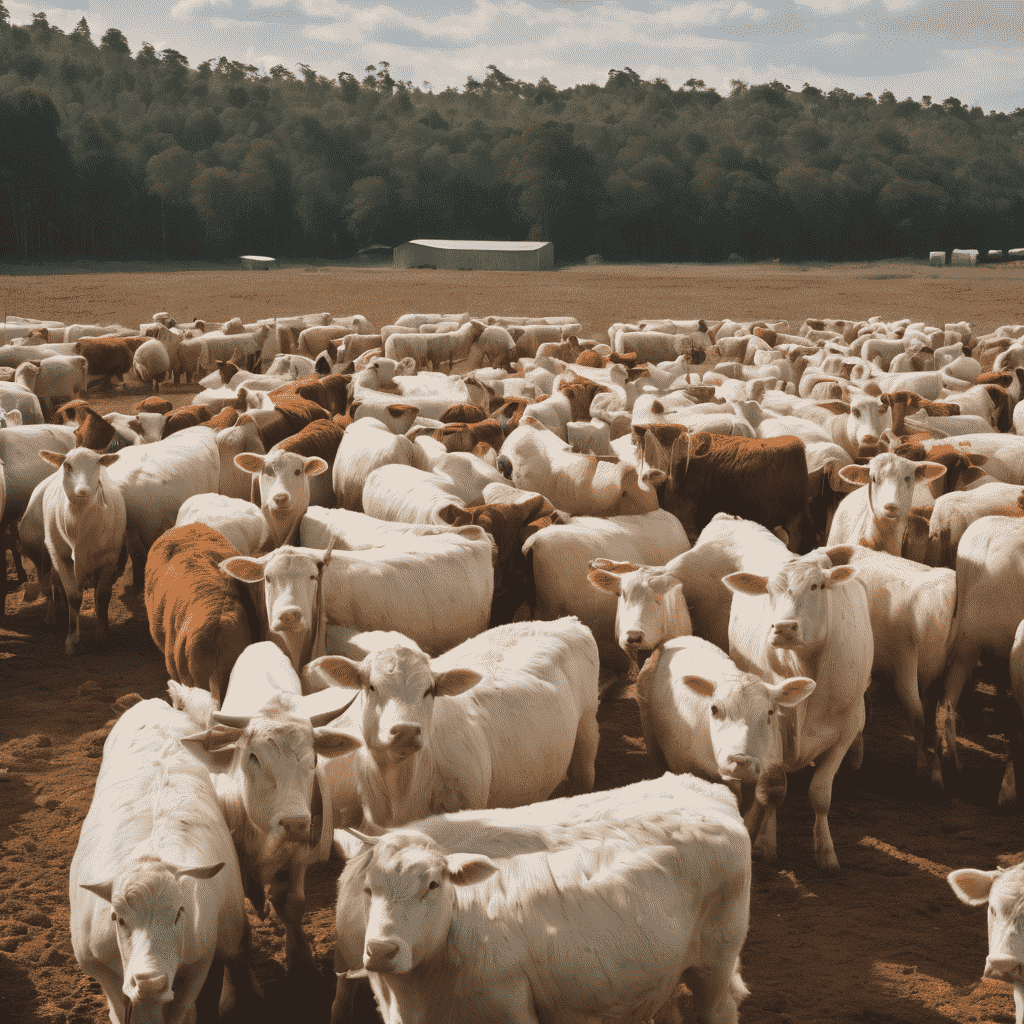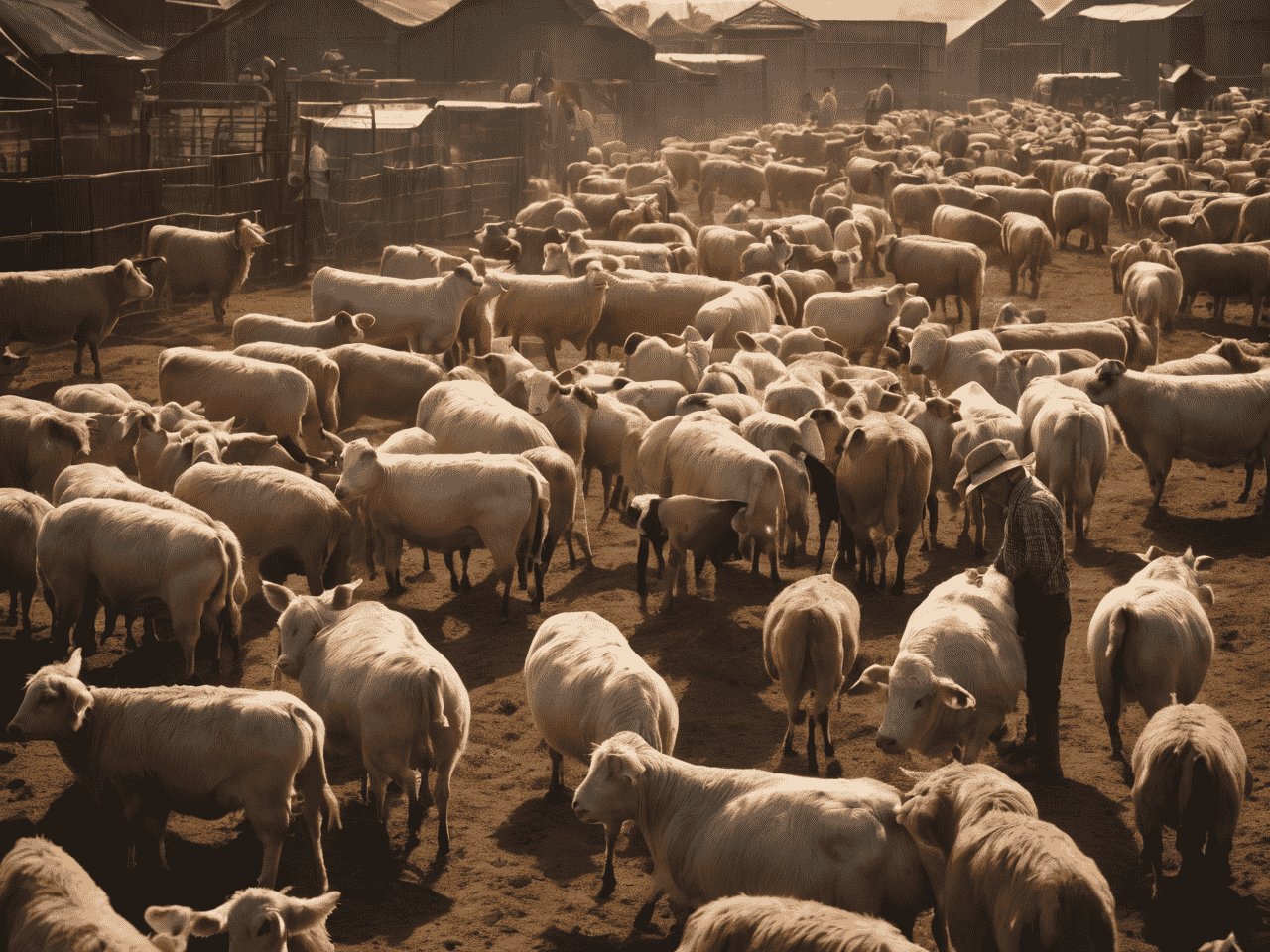Intensive livestock farming, also known as factory farming, is a method of farming that focuses on maximizing production while minimizing costs. It involves keeping more animals like cattle, poultry and fish using modern technology, biotech and global trade. The primary products of this industry are meat, milk and eggs for human consumption.
However, there is an ongoing conversation about the sustainability of this approach due to its resource demands. In addition, the benefits, drawbacks, and ethical aspects of intensive animal husbandry continue to be debated. These conversations include topics such as food production efficiency, animal welfare, health effects and environmental consequences.
What are some alternatives to intensive livestock farming?
Numerous options exist as alternatives to intensive livestock farming. Among these, organic farming is a good choice. Organic farmers must strictly follow guidelines for cultivating crops and caring for animals. These guidelines call for the use of antibiotics on animals only when necessary, the use of synthetic fertilizers and pesticides in favor of natural alternatives such as manure and wood ash as fertilizers, as well as plant-based pesticides. Additionally, organic farming emphasizes land management that creates habitats for wildlife.
Another option is integrated farming, where crop production is combined with livestock farming. This approach has the potential to reduce reliance on chemical fertilizers and pesticides, as well as provide a more diverse range of products.
Agroforestry is another option which trees are grown alongside crops and livestock. This method can improve soil quality, reduce erosion and provide habitat for wildlife.
Finally, there is cellular
agriculture, a developing field that revolves around the production of meat, milk, eggs, and other animal products using cell culture instead of traditional animal agriculture. This approach holds the promise of reducing the environmental footprint of animal agriculture while continuing to satisfy consumer demand for these products.
What are the benefits of organic farming?
Organic farming offers numerous benefits. One of the most significant advantages is that it is environmentally friendly. Organic farmers use environmentally friendly pest control methods and use organic fertilizers made primarily from animal waste and nitrogen-fixing cover crops. These practices help reduce pollution, conserve water, prevent soil erosion, and increase soil fertility and overall health.
Organic farming also promotes sustainable development by responsibly managing natural resources and protecting the environment for the benefit of future generations.
Another advantage of organic farming is that it provides healthy and tasty food. Organic produce is free from harmful chemicals, pesticides and fertilizers, which can negatively affect human health.
Finally, organic farming is a cheap process that can generate income through export as well. Organic farmers use natural inputs like manure and wood ash as fertilizers and plant-derived pesticides instead of expensive chemical fertilizers and pesticides.
What are some disadvantages of organic farming?
Organic farming has many advantages, but it also has some disadvantages. Here are some disadvantages of organic farming:

- Higher costs: Organic farming frequently comes with higher costs compared to conventional farming due to the additional labor and time required for crop and livestock production.
- Reduced crop output: Organic farming generally produces low yields compared to conventional methods because conventional methods use natural fertilizers and pest control techniques, which may not be as powerful as synthetic alternatives.
- Limited Availability: Organic products may not be readily available in all regions, which may make it difficult for consumers to find them.
- Requirement of additional planning: Organic farming requires more extensive planning and management than conventional farming because of its dependence on natural inputs, which are less predictable.
- Less efficient: Organic farming is often less efficient than conventional farming because it requires more land to produce an equivalent amount of food.
It is important to understand that while organic farming has some drawbacks, it also offers numerous advantages including its environmental friendliness, production of healthy and tasty food and its promotion of sustainable development.
How can we reduce the environmental impact of livestock farming?
There are several ways to reduce the environmental impact of livestock farming. Here are some of them:
Improving productivity is one method of reducing the environmental impacts of livestock farming. This can be achieved by improving feed quality, refining breeding methods and reducing waste.
Reducing greenhouse gas emissions is important because livestock farming is a major source of these emissions. To achieve this, farmers can shift to renewable energy sources such as solar or wind power and also reduce the use of fossil fuels in their farming activities.
Water conservation is important in livestock farming as it consumes a significant amount of water. To reduce water use, farmers can adopt more efficient irrigation methods such as
drip irrigation and reduce the water they use for activities such as cleaning and other non-essential purposes.
Farmers often use chemicals like pesticides and fertilizers in livestock farming. To reduce the environmental impact of these chemicals, farmers can turn to natural alternatives such as manure and compost. This helps in reducing the use of synthetic chemicals in farming practices.
Livestock farming generates a significant amount of waste, which harms the environment. To combat this problem, farmers can adopt waste management techniques such as composting, which turns animal waste into valuable fertilizer. This helps reduce waste and its potential negative impact on the environment.
Farmers can support sustainable agriculture by using practices such as crop rotation, planting cover crops and low tillage. These techniques enhance soil health and reduce erosion, contributing to a more sustainable and environmentally friendly approach to agriculture.
Try different farming methods that are more environmentally friendly. Some options include
organic farming, integrated farming, agroforestry and cellular
agriculture. These approaches can help reduce the environmental impact of livestock farming.
Keep in mind that while these methods may be effective in reducing the environmental impacts of livestock farming, they may not be appropriate for every farmer or every location.
Advantages and disadvantages of intensive livestock farming
Advantages
Increased productivity: Livestock intensive farming practices have increased production and efficiency while also reducing costs. One such example is the concentrated animal feeding operation (CAFO), which allows farmers to raise more animals by keeping them in concentrated areas while making the most of available land.
Economic Importance: Livestock farming plays a significant role in the economy, contributing about $883 billion directly. This also does not include the various services that depend on it, such as butchers, retailers, transport, feed production and equipment manufacturing. Apart from its economic value, livestock farming also sustains the livelihoods of about 1.3 billion people and ensures food security.
Availability: Livestock farming has made products like milk, honey, eggs and meat more accessible and affordable. This is especially crucial since these items are an essential staple in our diet.
Disadvantages
Animal welfare: Some cost-cutting practices can have a negative impact on animal health and well-being. In many countries and territories, there are laws that recognize that animals are not just goods but are capable of feeling emotions, including pain and distress. As a result, it is not acceptable for animals raised as livestock to endure harsh conditions.
Environmental Consequences: Intensive livestock farming practices often raise concerns about their impact on the environment. In fact, this type of farming is sometimes called "factory farming" because of its significant environmental footprint. Environmental issues associated with intensive livestock farming include soil erosion, water pollution, greenhouse gas emissions, deforestation and loss of biodiversity.
Health concerns: Intensive livestock farming practices can facilitate the transmission of diseases to animals, and there is a risk of these diseases reaching humans. This is particularly worrying in the context of antibiotic resistance, which is becoming an increasingly significant global issue.
Conclusion
Intensive livestock farming, or factory farming, focuses on maximizing production while minimizing costs, but there are ongoing debates about its sustainability, resource demands, and ethical aspects. Alternatives such as organic farming, integrated farming, agroforestry, and cellular agriculture offer more environmentally friendly options. Organic farming has numerous benefits, including environmental friendliness and production of healthy food, but it also has some disadvantages such as higher costs and reduced crop output. To reduce the environmental impact of livestock farming, improving productivity, reducing greenhouse gas emissions, conserving water, using natural alternatives to chemicals, managing waste, and adopting sustainable agriculture practices are recommended. Intensive livestock farming has advantages such as increased productivity and economic importance, but it also has disadvantages including animal welfare concerns, environmental consequences, and health risks.
Reference & Recourse




.png)



.jpg)

.jpg)
.jpg)



0 Comments